
Faiyum Oasis: The Heart-Shaped Hidden Garden of Egypt
In TV shows and movies, if an oasis is shown, it is usually either a mirage or some tiny pool of water next to a palm tree in the middle of the desert. We could be forgiven for thinking that all oases are like this - but we’d be wrong. Some oases are huge. Faiyum Oasis in Egypt isn’t just one small pool of water but a collection of many lakes and canals, as well as the fertile lands that surround them. Of course, this being Egypt, Faiyum Oasis isn’t just a site of natural beauty, it has its own fascinating history as well.
What is Faiyum Oasis?
Faiyum Oasis can be found to the west of the Nile, around 62 miles (100 kilometers) south of Cairo in Egypt. It is a basin in the desert that is between 490 and 656 square miles (1,270 km 2 and 1,700 km 2) in size, with its bottom laying around 150 feet (45 meters) below sea level.
Unlike most true oases, Faiyum Oasis doesn’t get its water from a spring or well. Instead, it gets its water from a channel of the Nile, the Bahr Yussef. The fertile lands of the oasis were formed by mud which was brought down and dumped by the Bahr Yussef. Several canals branch off from the river to irrigate the surrounding lands. The waters drain into the large saltwater Lake Moeris.
Besides the beautiful lakes and fertile agricultural land, Faiyum Oasis is famed for its great year-round climate, collection of water wheels, and various historical sites.

The Faiyum Oasis area of Egypt has supported human life for more than 8,000 years. (NASA Earth Observatory)
The History of Faiyum Oasis
The history of Faiyum Oasis goes back millions of years. During the late Miocene period, the Mediterranean Sea was going through the Messinian Salinity Crisis. This was a period during which much of the Mediterranean Sea had dried up.
During this period, the Faiyum Oasis was just a dry hollow in the middle of the desert, and the Nile simply flowed past it into the bottom of a canyon that was located where the city of Cairo stands today. When the Messinian Salinity Crisis ended, the formation of Faiyum Oasis began.
When the Mediterranean re-filled, what was the Nile canyon became an arm of the sea that reached far inland. Through the centuries, this arm of the sea built up with silt and became what is known as the Nile River Valley today. Over time, the silt continued to build up, causing the Nile to flood.
This silt build-up led to the Bahr Youssef periodically overflowing into the Faiyum Oasis basin. The basin flooded and soon the area was full of marshes and luxurious vegetation.
The fertile land soon attracted people. There is evidence that the area was inhabited during the Paleolithic and Neolithic eras. These people developed their own cultures, known as the Qaroun, Faiyum, and Moeris. When they settled in the area, they became the first people in Egypt to practice agriculture. Faiyum, Egypt was founded around 4000 BC and is one of the oldest continually occupied cities in the world.
- 11 of the Most Ancient and Continually Occupied Cities in the World
- Predynastic Egypt: Life Before the Pyramids
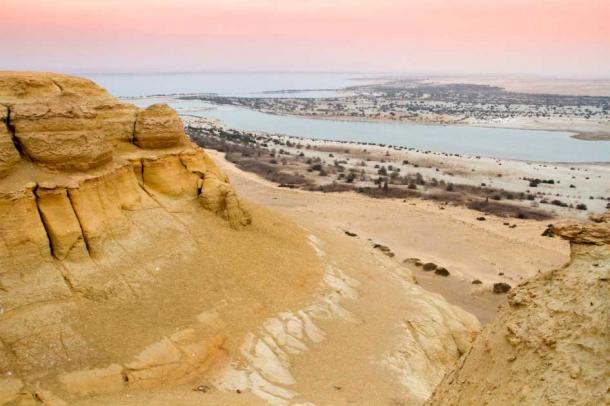
A wide view of the desert and lake at Faiyum Oasis (Abdelrahman / Adobe Stock)
Faiyum Oasis and the Ancient Egyptians
The first written record of the lake comes from around 3000 BC, during the reign of Menes, the founder of ancient Egypt’s first dynasty. During this period, more and more settlements arose along the banks of Faiyum Oasis as the pharaohs of the Old Empire encouraged agriculture.
While Faiyum Oasis had always been an important agricultural center of ancient Egypt, it became even more important during the 12th dynasty (1901-1802 BC). During this period, Egypt’s capital moved to Lisht, a place very close to the Nile, and it was deemed wise to capitalize on the area's agricultural potential as much as possible.
First, the waterway that ran from the Nile to the lake was widened and deepened, creating the canal that is now known as the Bahr Yussef, which fed into the lake. This helped to do three things. It helped to control the flooding of the Nile (important with Lishte so nearby), regulated the Nile’s water level during dry seasons, and irrigated the surrounding farmland through a network of canals that were added to the Bahr Yussef.
The work was begun by Senusert II and finished by his grandson, Amenemhat III. Besides the creation of the canals, the lake at Faiyum was turned into a massive reservoir that stored extra water ready for dry periods.
It was a massive undertaking, the largest of its kind for the time. The Egyptians were so successful that, for a long time, classic geographers and travelers recorded that the lake was the result of artificial excavation.
Various Egyptian pharaohs throughout the 12th dynasty and the Ptolemaic dynasty focused their rules on the area surrounding Faiyum Oasis. Numerous royal pyramids and tombs were built. The pharaohs who were deemed responsible for the oasis's success, specifically Amenemhat III, were deified.
The area even received its own god and cult, the cult of Sobek. In the many settlements that had sprung up in the area, temples were dedicated to manifestations of Sobek, the crocodile god. These settlements often revolved around the cult. Priests were major players in the settlement’s social and economic lives. They would organize religious festivals and arrange the purchasing of goods from local farmers.
- Sobek, the Crocodile God Who Sweated the Nile While Creating the World
- Bahla Fort: Oman’s Incredible Desert Oasis
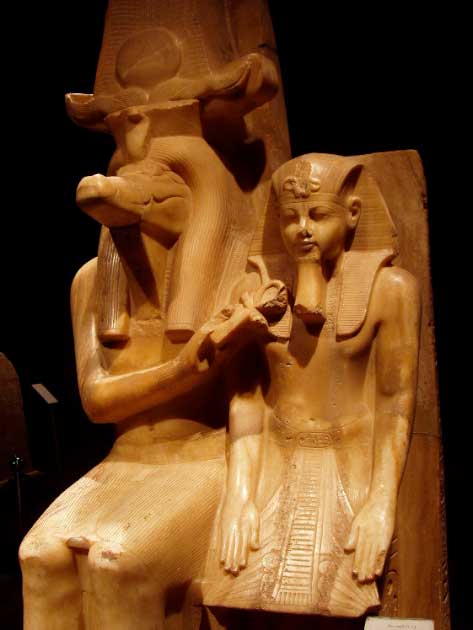
Detail of the sculpture of the crocodile-headed God Sobek and Pharaoh Amenhotep III from the 18th Dynasty, 1550-1292 BC (Beth Camp / CC BY 2.0)
Faiyum Oasis Decline
Eventually, the Egyptian Empire fell and was replaced by Roman Egypt. Greco-Roman Egypt was perhaps the most prosperous period in the history of Faiyum Oasis. Thanks to the 463 square miles (1200 km²) of arable land added to the area by the Ptolemies, the Faiyum Oasis was one of the Roman world's major breadbaskets. The Romans carried on these works and continued to reclaim land during the first and second centuries AD. As they reclaimed more and more land, the lake began to shrink ever faster.
From the third century onwards, the area went into decline. Many of the once-prosperous settlements in the Faiyum Oasis area were abandoned. This abandonment led to the system of canals falling into a state of disrepair.
From the middle of the 6th century and throughout the Middle Ages, the Arabs who had conquered the region worked tirelessly to return it to its former glory. Massive restoration works were carried out to unblock the canals, dig new ones and build dykes to aid irrigation. Flooded areas were dredged and bridges were built.
These works took centuries to complete, but by the rule of Mohamed Ali in the 14th century, the Faiyum Oasis was once again known as the “garden of Egypt”.
This led to one more downfall. The area began to suffer from overpopulation and over-salination. Today, Lake Qaroun, all that is left of the old prehistoric lake fed by the Nile, is now just as saline as the Mediterranean.
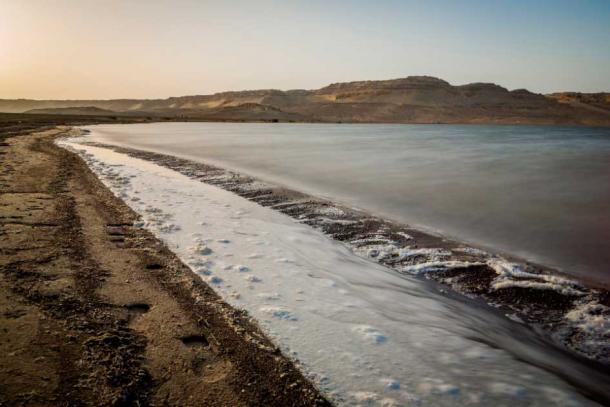
Lake Qaroun is all that remains of the prehistoric lake, and is now a saltwater lake (Amr Hassanein / Adobe Stock)
Faiyum Oasis in Modern Times
Faiyum has remained an important region of Egypt well into modern times. In 1910, over 400 square miles (1,000 km 2) of Faiyum Oasis was used for agriculture, predominantly for cereals and cotton.
Much of the damage done to the area in the past was fixed by the construction of the Aswan Low Dam. The dam brought in a fuller supply of water, which allowed another 20,000 acres (80 km 2) of land to be cultivated between 1903 and 1905. The area became known for its figs, grapes, olives, and roses, as well as its own breed of sheep.
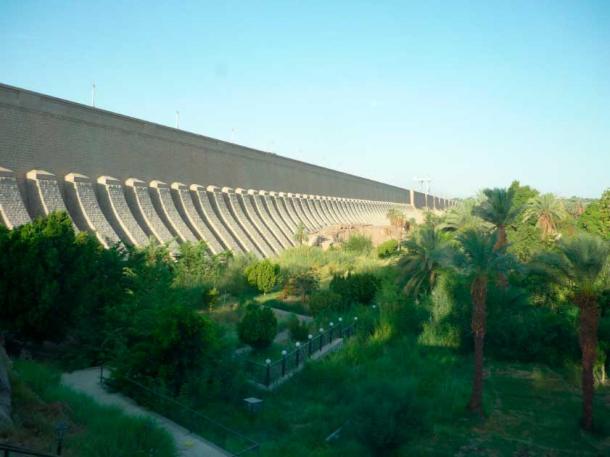
The Aswan Low Dam in Faiyum Oasis has helped the area remain the garden of Egypt (Remih / CC BY SA 3.0)
Today, Faiyum Oasis is somewhat of a tourist hotspot. While most people associate Egypt with ancient pyramids and large swathes of desert, the oasis shows a much more idyllic side to the country.
Besides all the farmland, the fertile soil of Faiyum Oasis has led to some areas of outstanding natural beauty. Wadi El Rayan is a protected national park almost 700 square miles in size. It is made up of an upper and lower man-made lake, connected by Egypt’s largest waterfall. It also includes moving dunes, sulfur springs, and mountains.
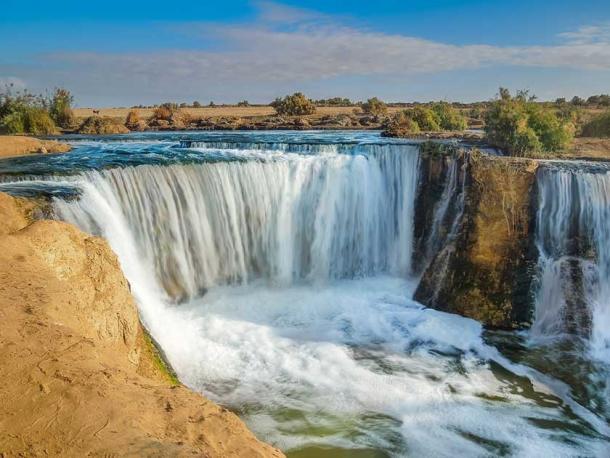
The Wadi El Rayan National Park in Faiyum Oasis includes Egypt’s largest waterfall. (Rowaydaabdelgwad / CC BY SA 4.0)
The Waterwheels of Faiyum Oasis
In the third century BC, Ptolemaic engineers introduced hundreds of waterwheels to Faiyum Oasis. These used the topography of the land to lift water into the various irrigation channels by using the natural energy of the area’s fast-moving streams.
Amazingly, the region is still home to around 200 of these water wheels that still redistribute the water from the Bahr Yussef to this day. Today, they have become an important tourist attraction, especially for history buffs in the city of Faiyum.
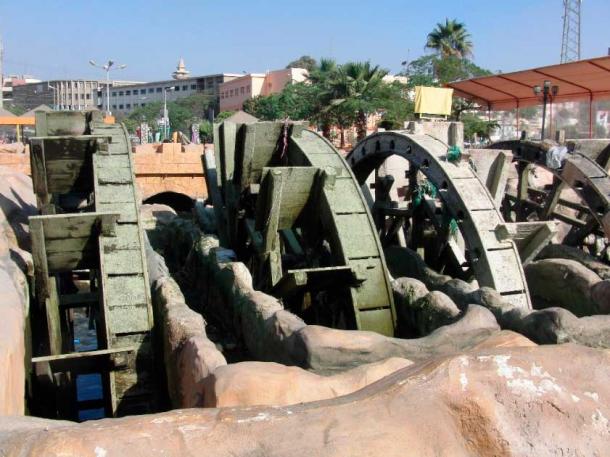
The ancient waterwheels in the city of Faiyum (juliegomoll / CC BY 2.0)
Wadi Al Hitan
Perhaps unsurprisingly for an area with a history that dates back millions of years, Faiyum Oasis is rife with fossils. Today, many of the fossils can be found at The Valley of Whales, also known as Wadi Al Hitan.
The area is home to the skeletons of hundreds of giant whales and sharks, as well as a seemingly infinite number of fossils. These skeletons have proven invaluable in the study of the mammalian evolution.
The fossils include those of the earliest, and long-extinct, suborder of whales, the Archaeoceti. The fossils tell the story of how the first whales emerged and how they went from being a land-based animal to ocean-dwelling.
Fossils of the Basilosaurus (from the Archaeoceti suborder) show how this amazing 60-foot-long whale had two small hind limbs. These tiny limbs would have been useless for movement, and it is believed they offer evolutionary evidence of how whales transitioned from land to sea.

The Valley of the Whales in Faiyum Oasis contains an incredible number of fossils that have given insight into evolutionary development. (AhmedMosaad / CC BY SA 4.0)
Conclusion
For thousands of years, Faiyum Oasis has been at the heart of Egyptian agriculture. Like many of the ancient wonders that Egypt is home to, the oasis’s canals and waterworks are a testament to the creativity and ingenuity of our ancestors.
However, Faiyum Oasis is also a warning of the drastic environmental impact humans often have on their environment. Faiyum Oasis started as an arid desert, but thanks to the process of nature became a garden of plenty, attracting its first human settlers. Over time, as settlers became increasingly greedy, the area fell into decline.
This necessitated the great waterworks of the ancient Egyptians to be built. Until the Romans moved in and once again overexploited the area, causing it to once again fall into decline. When the Arabs moved in, they spent centuries repairing the damage, only to ultimately fall into the same trap and cause another period of decline.
Today, while the area is still used for agriculture, it has become most famous as a tourist attraction. Hopefully, with its UNESCO World Heritage status and recognition as an area of outstanding beauty, Faiyum Oasis will finally get the respect and protection it deserves.
Top image: The Faiyum Oasis extends for hundreds of miles, and has enabled life and civilization in the Nile River Valley. Source: Nader / Adobe Stock
By Robbie Mitchell
References
Boraie, E. May 20, 2020. Fayoum Oasis: Egypt's best kept secret. CNN. Available at:
https://edition.cnn.com/travel/article/fayoum-oasis-egypts-best-kept-secret/index.html
Faiyum Oasis. Medomed. Available at: https://medomed.org/featured_item/fayoum-oasis-and-lake-qaroun-cultural-landscape-egypt/
Mark, J. July 27, 2017. Fayum. World History Encyclopedia. Available at: https://www.worldhistory.org/Fayum/















